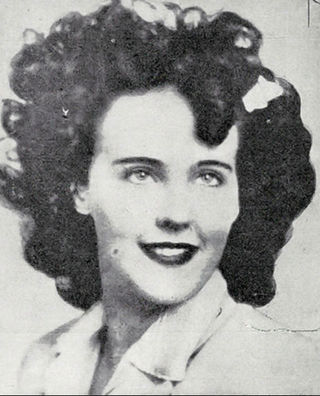Traumatic Brain Injury
Will the Famous Black Dahlia Case Ever be Solved?
The New Year marks the 73rd anniversary of the largest manhunt in L.A. history.
Posted December 30, 2019
A high-profile murder mystery of a young woman named Elizabeth Short still stumps police as its 73-year anniversary approaches.
The saga began on a winter morning on Wednesday, January 15, 1947, when a woman walking next to a vacant lot in southwest Los Angeles made a disturbing discovery: lying next to the sidewalk was the body of a nude woman in a section of the neighborhood known as a lover’s lane.
The discovery launched what police would call the largest manhunt in Los Angeles, with officials organizing a massive team of officers, including the FBI and other law-enforcement agencies.

The body was bathed and posed and her jet-black hair was damp and slicked back against the weed-laden ground. Little physical evidence was found. LAPD homicide detectives surmised the victim had been killed elsewhere and driven to the area. From lifted fingerprints, the victim was identified as 22-year-old Elizabeth Short.
Growing up in the 1930s in Medford, Massachusetts, young Elizabeth had dreams of becoming a movie star. So she eventually took a bus to Los Angeles and moved into a boarding house in Hollywood behind the Florentine Gardens nightclub and found work there as a waitress.
She made contacts with people in the movie business, plus she roomed with actress and model Ann Toth, who had worked on the Charlie Chaplin film Monsieur Verdoux and who’d had a small part in the Susan Hayward film Smash-Up. Toth, Short’s closest friend, promised her a role in Florentine Gardens’ burlesque revue. Short shared the news with her mother in a letter dated January 2, 1947. It marked the last correspondence Phoebe Short would receive from her daughter.
On Thursday, January 9, 1947, Short returned from a San Diego trip with Robert “Red” Manley, a 26-year-old married salesman she had dated. He dropped her off at downtown Los Angeles’s Biltmore Hotel, where Elizabeth Short was to meet her visiting sister. Short, wearing a black tailored suit and matching suede high-heels, was seen using a lobby telephone and then leaving the hotel on foot. She walked five minutes to the Crown Grill Cocktail Lounge, where patrons recalled seeing her stop in as if she were looking for someone. What was going through Short’s head? Had someone crossed her path who had promised her the Hollywood acting job she’d dreamt about?
At dawn on Wednesday, January 15, six days after her disappearance, a black luxury sedan with an unidentified driver briefly parked next to a vacant lot at Leimert Park in South Los Angeles. By late morning, Short’s body was discovered near where the sedan had stopped. The coroner determined Short had died from a hemorrhage caused by lacerations and shock from a brain concussion.
Early in the investigation, according to the LAPD, investigators interviewed more than 150 men as potential suspects. Manley, who had dropped off Short at the downtown hotel, became one of those on the long list of suspects.
On January 21, 12 days after Short's disappearance, the LAPD issued a police bulletin enlisting the public’s help. They posted it in bus and taxi terminals. It read, “WANTED: INFORMATION ON ELIZABETH SHORT,” with her photo below the headline. The bulletin described Short as five-feet, six-inches tall, 118 pounds, with decayed lower teeth and fingernails chewed to the quick. At the LAPD’s morning briefings the next day, the bulletin was distributed to officers working foot beats.
Police then recovered Elizabeth’s handbag and a shoe from atop a trashcan two miles from where her body had been found. The items had been wiped clean with gasoline, erasing any fingerprint evidence.
The press assigned the criminal case a nickname, a practice started in the 1940s by Los Angeles-area newspapers, naming high-profile female murder victims after flowers. There was the Red Hibiscus Murder of Naomi Tullis Cook, fatally beaten, and the White Gardenia Murder of Ora Murray, found dead near a white gardenia. For Short’s killing, because she preferred black clothing and wore a dahlia in her dyed hair, the papers called her case the Black Dahlia Murder.
Next, on January 24, 1947, a manila envelope postmarked a day earlier arrived at the Los Angeles Examiner newsroom. Inside were Short’s birth certificate, Social Security card, photographs, and address book embossed with the name Mark Hansen. On the outside of the envelope were the words, “Here is Dahlia’s belongings. Letter to follow.”
After detectives learned that Elizabeth had rebuffed Hansen’s advances, he became suspect No. 1. But with no other evidence, police dropped Hansen as a suspect.
The investigation stalled for the next couple of years until the summer of 1949 with the discovery of another body, this one of beauty shop operator Louise Springer found inside a parked car a block from where Elizabeth Short’s remains were dumped. Publicity surrounding the murder frightened Los Angeles-area women into believing the Black Dahlia killer had struck again. The LAPD launched another manhunt, assigning officers across the city to investigate both murders, including a house-to-house search for evidence. Police later determined the cases to be unrelated. Then, a 1949 grand jury convened to consider evidence against Robert Manley but voted against indicting him.
The case then went cold, and despite law enforcement's efforts, more than seven decades later the Elizabeth Short murder remains unsolved. The FBI, on its history site, wrote, "Who killed the Black Dahlia and why? It’s a mystery. The murderer has never been found, and given how much time has passed, probably never will be."
References
Scott, Cathy & DK Books (2017). The Crime Book. The Black Dahlia Murder, 220 (Ch. 6). Dorling Kindersley: London, England.




